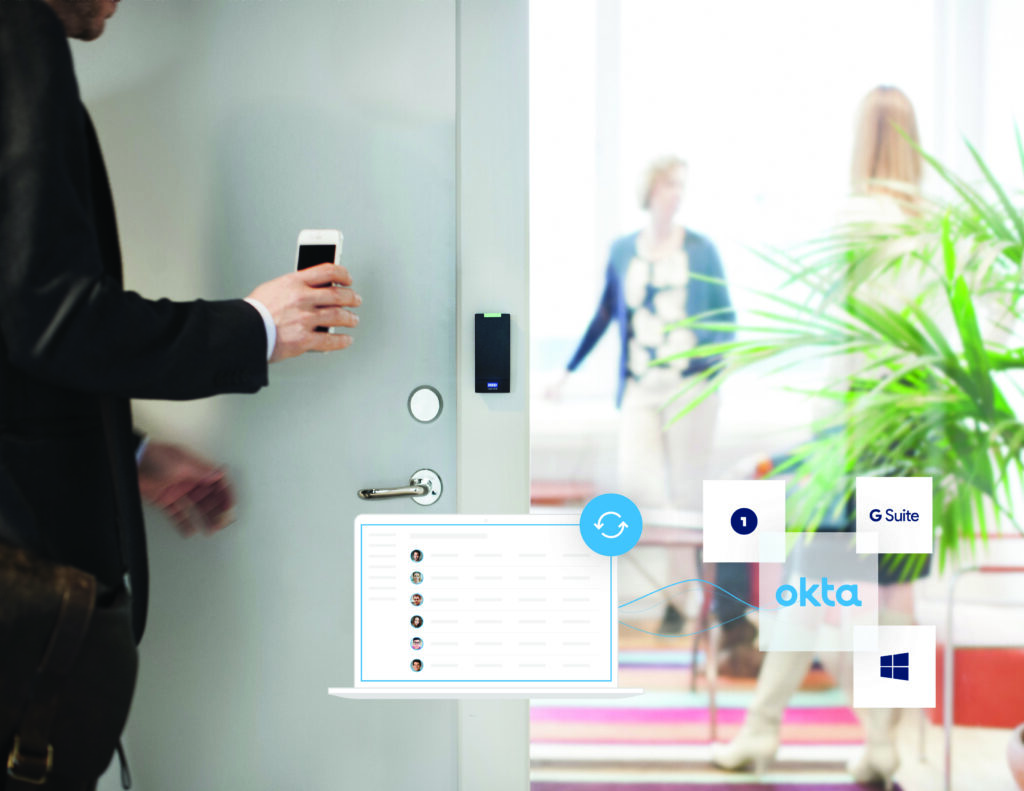Access control integrations allow multiple third-party software platforms to communicate and function with each other. This allows for a streamlined user experience.
For example, when information gets inputted into Software A, the information automatically shows up in Software B. As data gets modified, both systems update to reflect the changes.
“That’s all fine and good. But how will this help me with access control?” You ask.
The short answer is: “infinitely.”
How Access Control Integrations Help
Software-as-a-service (SaaS) companies specializing in access control often partner with hardware and/or software companies to integrate their products. But why are integrations important? Here are three benefits of integrations:
- Streamlined Operations: Administrators streamline their workflows by integrating with tools they already use, including identity management, communication, visitor management, and web automation systems.
- Centralized Monitoring: Administrators can quickly respond to alerts and see data in real-time. Therefore, you get the full benefit of multiple security features, all working together.
- Scalability: A scalable access control system allows organizations to quickly and easily add and remove users. From one physical location, admins of global enterprises may adjust user credentials in any of their offices around the world.
For the consumer, access control integrated with other security systems means streamlined workflows and fortified building security. Integrations also liberate users from the hassle of learning multiple software platforms.
Integrations also mean one less dashboard to pull up and navigate through. Let’s look at an example.
Employee Termination
- Without Integrations: When a law firm fires an employee, his credentials need to be revoked immediately. Therefore, the HR Director must open the company’s access control, delete the credentials of the terminated employee, open Google Workspace and delete the user’s account. The process of logging in and logging out continues until all the employees’ accounts are terminated.
- With Integrations: An access systems integrations between identity management, Google workspace, and access control is a one-step solution. With this integration, when deactivating employee credentials occurs in the identity management system (e.g. Okta), keys across all offices deactivate.
Real-World Integrations: How can my security integrate with my access control?
Often SaaS companies, like Genea, will offer third-party integrations for their access control products. Genea prides itself on working closely with customers to help develop these helpful new integrations.
When Futurewei Technology, a tech-forward company and Hauwei Technologies affiliate, signed up for Genea, it needed an integration with their identity management system. So, Genea led an integration between access control and Azure Active Directory (Azure AD). Genea’s SCIM integration with Azure AD gave Futurewei admins the power to add and remove users within the management system, without opening their access control system.
Recently, Genea launched an integration with OTIS elevator dispatch. The customer requesting the integration was LBA Realty, a full-service real estate investment and management company based in Irvine, CA. Now, when visitors arrive at the LBA Realty Building, they can get to the correct floor without difficulty.
We’re always looking to add new features that will provide maximum value to our customers,” said Cece Cornett, Account Manager at Genea. “So if they want to see something, [they should] please let us know.”
Schedule a demo to learn how Genea can integrate with your systems with access control.



